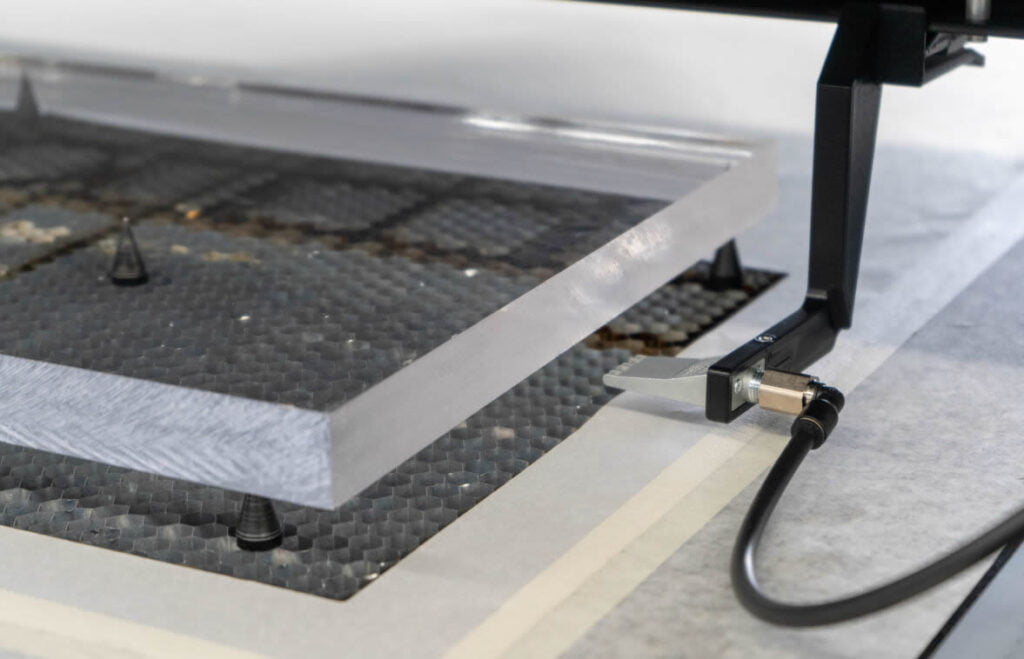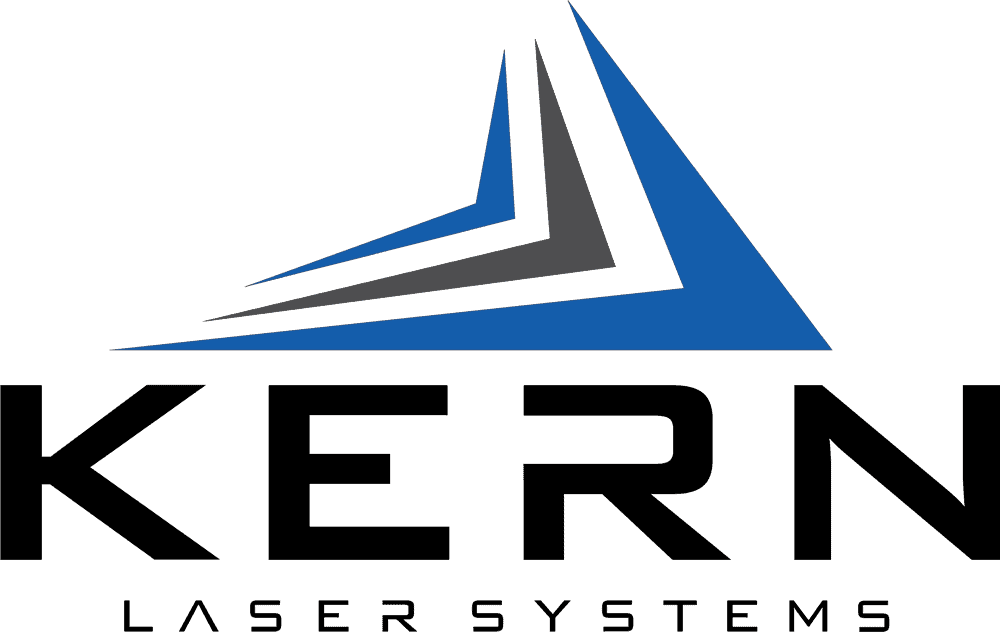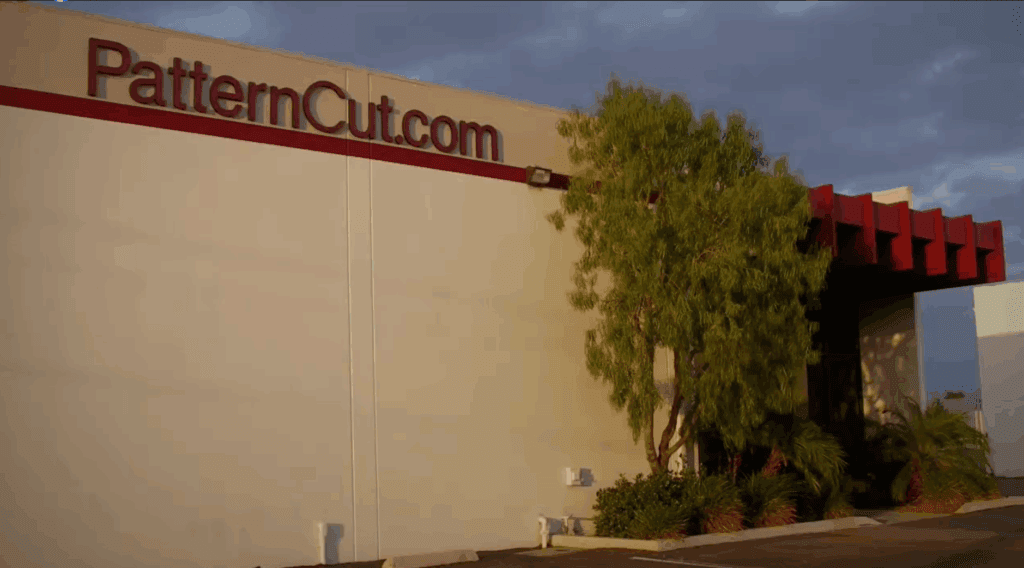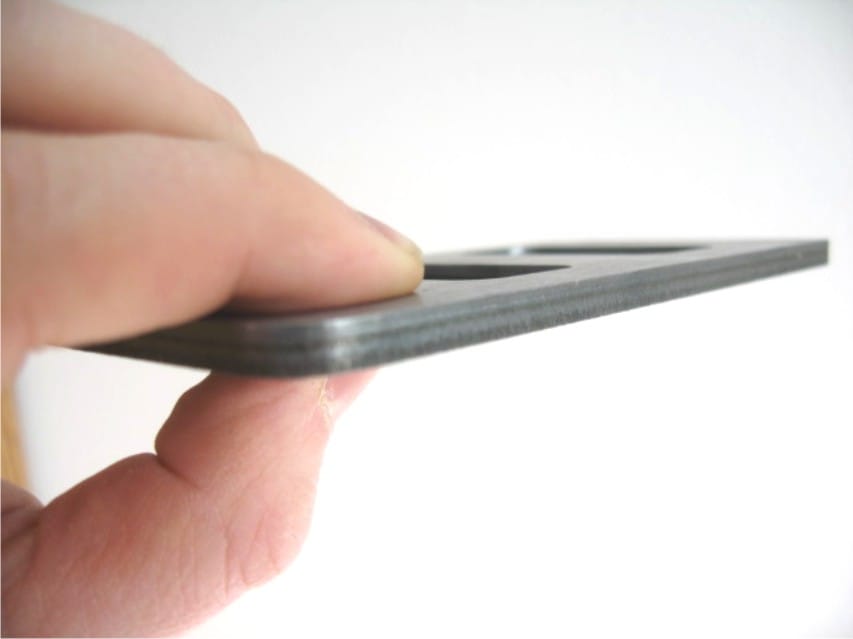Laser cutting enthusiasts know the struggle—achieving that perfect, fire-polished edge on acrylic sheets can be a daunting task. Flare ups, especially on thicker acrylic, can occur at any moment resulting in excessive melting and discoloration of the acrylic being processed. But fear not, because the Fire Warden is here to revolutionize your acrylic cutting experience.
Inspiration Strikes
The Fire Warden was born from a simple yet powerful idea: to effortlessly reduce flames and flare ups when cutting acrylic sheets, resulting in a safer and more productive working environment. Our team set out to create a solution that eliminates the need for manual intervention, such as using an air hose or physically blowing out the flames by mouth. The Fire Warden steps in to tackle this challenge head-on.
Key Features and Functionality
At the heart of the Fire Warden’s design are its innovative air knife mechanisms which attach seamlessly to the top gantry vacuum tray of the OptiFlex, LaserCELL, MICRO and EcoFlex laser systems. During the cutting process a powerful stream of high-pressure air is delivered underneath the acrylic sheet and directed towards the nozzle. This setup minimizes fume accumulation directly below the laser nozzle where flare ups typically occur. Not just a safety feature, the Fire Warden also ensures the quality of your cuts by reducing thermal stress on the material.

Control & Flexible Adjustment
One of the challenges in creating the Fire Warden was making it compatible with a variety of acrylic sheet sizes and thickness. The Fire Warden device attaches to the top gantry vacuum tray and can be positioned to the outside of the acrylic sheet being processed. Height adjustments to the air nozzle are made by adjusting a simple thumb screw, allowing the air flow to reduce fumes and flames on acrylics up to 1 inch thick. Lastly, the air pressure is controlled by an air regulator, delivering the perfect amount of air to the bottom side of the sheet.
Other Important Factors
A honeycomb bed serves as an indispensable tool, ensuring that the acrylic remains flat during the cutting process. Spacers are generally placed in the honeycomb cells to lift the acrylic sheet off the honeycomb structure. This important step minimizes the appearance of undesirable tick marks caused by laser beam reflections off the honeycomb bed.
The work area is to be covered with a thin layer of paper increasing the efficiency of the vacuum blower. The area directly below the acrylic sheet should be cut out and removed, allowing any fumes to be pulled into the down draft table and ducted away from the machine.
Even with the Fire Warden installed, Kern recommends a fire extinguisher be kept near the laser system. The fire extinguisher should be carefully chosen to extinguish flames from the material types being processed.
Kern Commitment
Our journey doesn’t end here. We’re always open to feedback from our customers, ready to make further enhancements or developments based on real-world usage and evolving industry needs. The Fire Warden isn’t just a solution to a problem—it embodies our commitment to innovation and excellence. With its introduction, we’re setting a new benchmark in the laser systems space, leaving a lasting impact on the industry and paving the way for future advancements.



